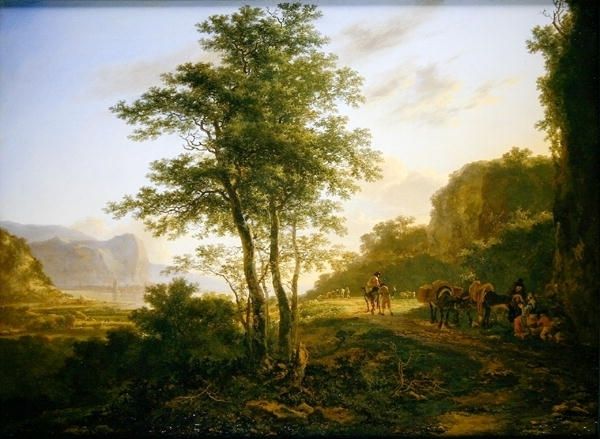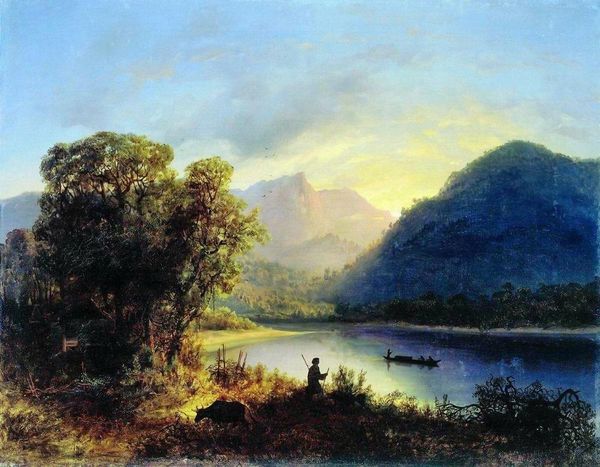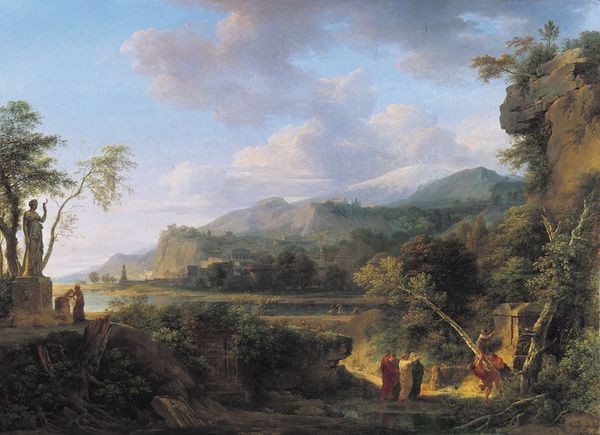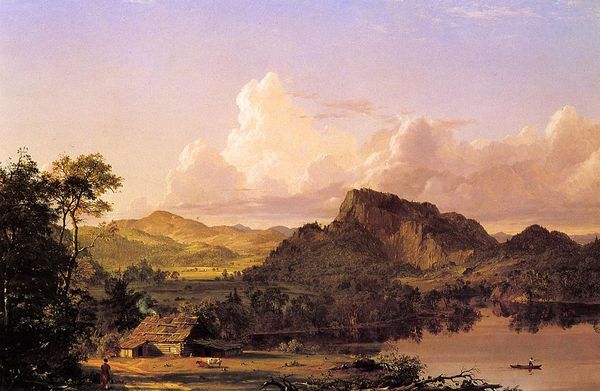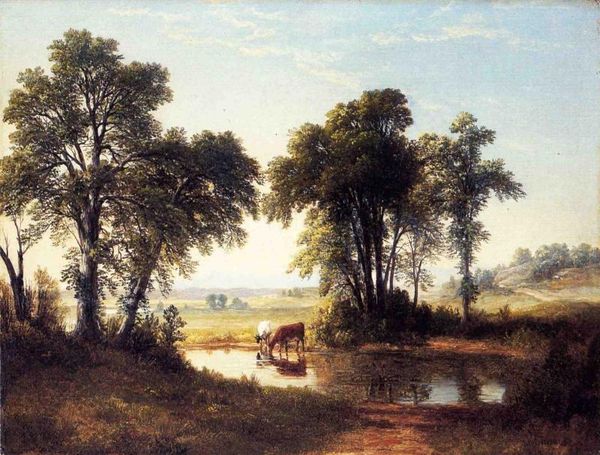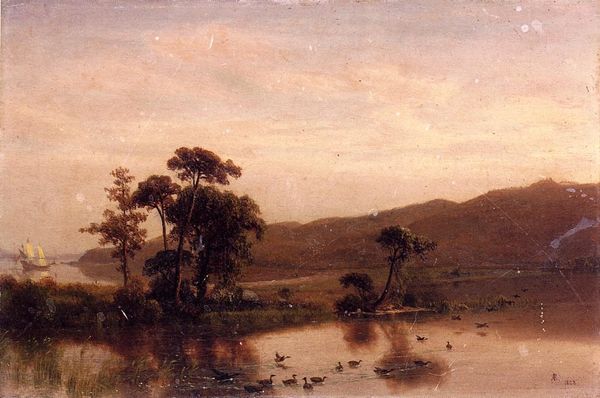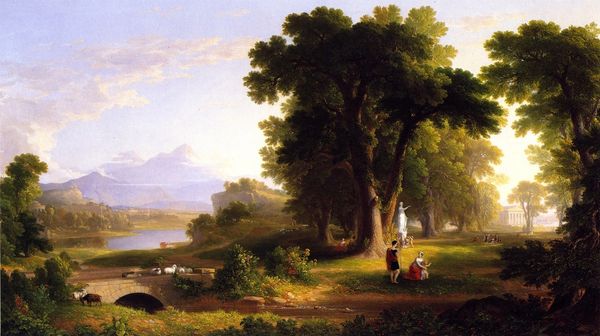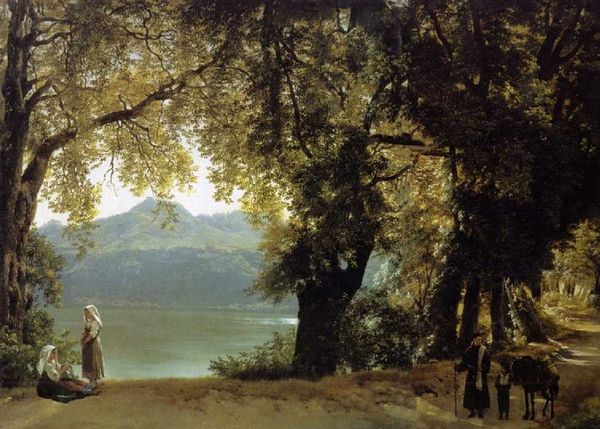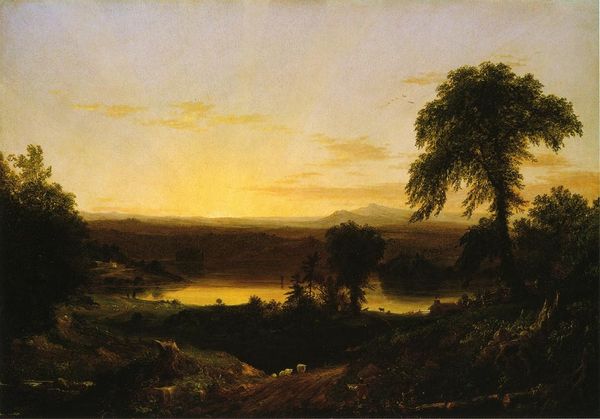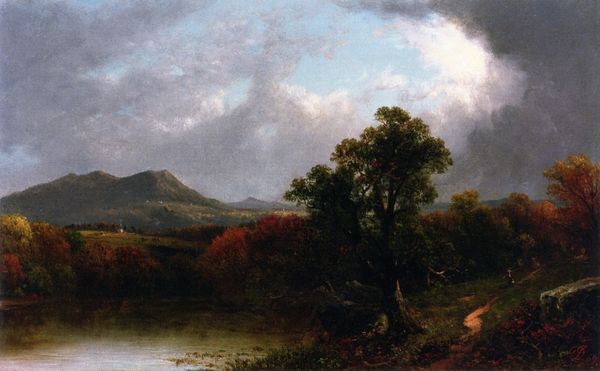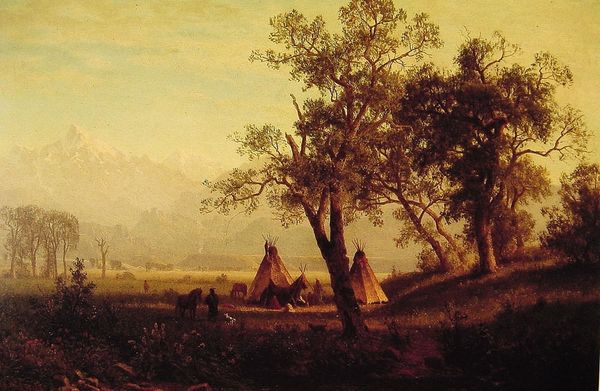
Copyright: Public domain
Curator: We’re looking at Camille Pissarro's "Antilian Landscape, St. Thomas," painted in 1856. It's currently held in a private collection. Editor: It has this enveloping warmth—a sepia tone that makes everything feel both idyllic and slightly melancholic. The light really catches on the taller grasses. Curator: Indeed. Pissarro employed oil paints en plein air, which was quite innovative for the time. You can really see the impact of direct observation in his capture of light and atmosphere. Notice the formal structuring—the way the large tree on the left anchors the composition, leading the eye toward the figures in the middle ground and ultimately to the soft, hazy mountains in the background. Editor: It is idyllic, but what does it *mean* to represent labour like this, especially in a colonial context? The riders in the foreground and workers on foot don't quite fit the aesthetic ideal - the composition has this tension that draws me to how the work was *made*. There's something deeply embedded here with respect to how land becomes "landscape" – how labor transforms materials and environments. Curator: Well, Pissarro was experimenting with realism and romanticism at this point in his career, synthesizing the different schools of thought that dominated painting at the time. He would’ve been concerned with light and shape in this image, along with how it functions structurally within the composition to draw you into its space. Editor: Right, but this synthesis isn't neutral; the *choice* of where the light falls is deeply linked to systems of land use, and who benefits. Pissarro had this perspective, which, along with plein air painting, suggests a closer awareness of making art that traditional artistic practices overlook. Curator: Ultimately, “Antilian Landscape” offers us a glimpse into Pissarro’s early mastery of form and his evolving perspective on the landscape tradition. Editor: I’d say it's more of an early investigation into labor's influence in reshaping physical and social space. His technique offers us an unvarnished look into the material realities behind idealized visions of tropical life.
Comments
No comments
Be the first to comment and join the conversation on the ultimate creative platform.

